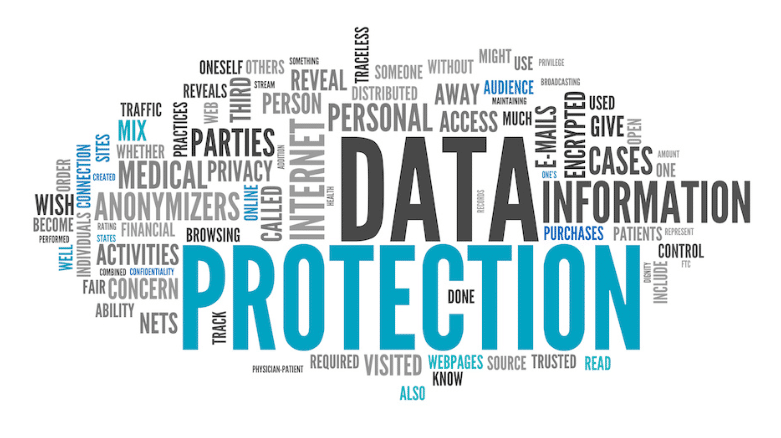Painting the picture of how important it is for you and your organization to consider risk policy and appeal instances where you have been denied a pass in compliance is quite an easy job, if you know what you are doing. Let’s unpack the differences, rationale, and explore the ways in which Scalexa can help you.
Since the boom of the internet, keeping a document confidential, inside of your 4-ton vault, inside a protected building, under lock and key has disappeared. Your publishing or sending of this document to teams that need to work hand in hand with you on a matter releases this document into the ether, and opens up 100 doors for risk and breech-ability. Unfortunately there is no way around this requirement as over 75% of all work documents currently are online.
Scalexa has seen companies at the forefront of innovation and profit flounder due to compliance and risk issues, and we have created an extensive and powerful division inside of our own company that solely deals with these types of projects. We specialise in risk management and we assist companies along their journey through compliance applications and data protection.
One thing that you need to know in order to see the value behind the service Scalexa offers is time management.
There is nothing more burdensome than having to pull 3 IT team members, 1 operations manager, and 2 accountants off of their daily cycle and routines for 1-3 months, so that they can prepare the necessary documentation and legislation to hand into a completely new company. This is where we come in. Not only have we ridden this horse multiple times, but we can make it jump, turn, and have a great connection with it as well. We know each and every policy you could ever need, and the majority of all companies and growing entities we have helped have all echoed the same comment:
“Scalexa made this a hands-free task for our company to walk through. We continued with our day to day focus and core roles, and they took on this bull like the seasoned matadors they are”.
Let’s unpack some of the different types your team will run into below:
Soc2
Systems and Organization Controls 2
Soc2 is a must for any fast growing global minded SaaS firm. This helps manage sensitive data and customer information, while helping legislate guidelines around data safety and connection based on industry standards and best practices.
Soc2 is a set of standards issued and maintained by the American institute for certified public accountants to establish trust between a customer and a service organisation.
The areas covered to audit in the trust service criteria are:
Security
Confidentiality
Availability
Processing
Integrity
Privacy
Before anyone dives into the above, a checklist is formed by a partner like Scalexa, so that we can effectively time manage and tackle easy tasks in the order they should be handled.
Here is the checklist – 9 steps
- Choosing your objectives
- 2 identifying the kind of report you need
- Defining the scope of your audit
- Conducting an internal risk assessment
- Performing a gap analysis and remediation
- Implementing stage appropriate controls
- Undergoing readiness assessments
- The actual soc2 audit
- Continuous monitoring
HIPAA
Risk is the likelihood that a threat will expose a vulnerability, to have an adverse impact on an asset. HIPAA just cares about EPHI (Electronic protected health information) as that asset.
Every day new hacking tools are invented and developed, meaning a continuous HIPAA risk assessment is crucial for ongoing projects and companies.
HIPAA has two main components:
HIPAA Security Rule (45 CFR Part 160 and Subparts A and C of Part 164) — Requires covered entities to protect ePHI using the appropriate administrative, physical and technical safeguards.
Privacy Rule (45 CFR Part 160 and Subparts A and E of Part 164) — Regulates who can access PHI, how it can be used, and when it can be disclosed.
Scalexa recognizes the importance of the order below, and navigates it for you entirely. The following 9 steps apply when conducting a HIPAA risk Assessment:
Step 1: Determine the scope of your risk analysis
Step 2: Collect data
Step 3: Identify potential threats and vulnerabilities
Step 4: Assess your current security measures.
Step 5: Determine the likelihood of threat occurrence
Step 6: Determine the potential impact of each threat occurrence.
Step 7: Identify the risk level.
Step 8: Determine appropriate security measures and finalise the documentation.
Step 9: Periodically review and update the risk assessment.
Some quick tips from the Scalexa team if you want your HIPAA risk assessment to be successful:
- Make sure your documentation meets HIPAA standards and record all procedures and policies, ensure they are accurate, and make them centrally available.
- Provide all staff members with training on HIPAA compliance practices and notification requirements.
- Keep HIPAA notification requirements in mind, such as the breach notification rule. This rule requires organisations to notify the HHS Secretary if a breach affects 500 or more individuals.
- Remember that you are required to repeat the assessment process at least annually.
- Remind your team of the end result. This is not an audit, instead, it aims to help you identify, prioritise and mitigate risks.
- Identify who the lead will be on this project.
- Understand that you can either do the assessment in house or outsource it to a HIPAA expert. Outsourcing the assessment may get the analysis and planning tasks completed faster.
Feedback from one of our clients in Norway:
“HIPAA caused a major backstep in our staff output, until we hired Scalexa to complete this assessment for us. Within no time at all, my staff filled their natural duties and Scalexa took this responsibility to ensure it was completed in a timely manner. We experienced zero downfall or delay, and this became so efficient and easy to bare, that we have no problem using them again whenever Soc2, ISO 27001, or HIPAA comes around again”
ISO27001
ISO/IEC 27001 is the international standard used to manage and measure information security policy and business practice. It offers double benefits — an excellent framework to comply with to protect information assets from malicious actors and a differentiating factor to give an organization an edge over its competitors.
The establishment of ISMS, including its implementation, depends upon various factors:
The overall size and structure of the organisation.
The security requirements.
The internal and external processes of the organisation.
The general needs of the organisation.
The business objectives of the organisation.
General cost of this compliance certification? Internationally, the general fee is found to be $13,000, but this can differ between countries and regions.
How to get certified?
The main objective of Scalexa informing you of the above information is to ensure that you know we can do this for you. We can handle the admin, simplify the process and do 99.9% of the heavy lifting. Without a middleman or a global IT specialist company, you would need to go through training to understand the vast space of what’s required, training into benchmarking, and training into compliance stands of best practice to stand a chance of passing this test.
All of the above three risk assessments and compliance certifications can be strenuous and annoying for a fast-paced hands-on team to bear. Scalexa uses our remote IT professionals to fish for templates that have already passed governance and compliance law, apply this to your account, saving you time and money, and assist you in the step by step process to conquer this necessary step and get straight back to business and your wanted core activity.
Contact one of our amazing technical staff representatives today at sales@scalexa.com, or call us at +1 770 501 1407.

